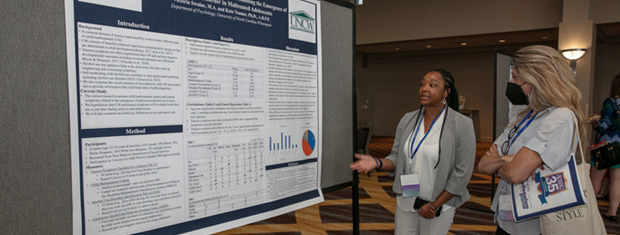




The APSAC Advisor is a peer reviewed quarterly news journal for professionals in the field of child abuse and neglect.
The APSAC Advisor provides succinct, data-based, practice-oriented articles that keep interdisciplinary professionals
informed of the latest developments in policy and practice the field of child maltreatment. It is designed to highlight
best practices in the field and publish original articles and current information about child maltreatment for professionals
from a variety of backgrounds including medicine, law, law enforcement, social work, child protective services, psychology,
public health and prevention in the U.S.
 If you wish to learn more about submitting an article to the Advisor, please click here.
If you wish to learn more about submitting an article to the Advisor, please click here.
This library contains Advisor issues dating back to the first issue in 1988. The most recent issue appears at the top.
Scroll down to select past issues by year and issue number. Once a publication appears in the box, you
can use the Enlarge button to open the document in a new window or tab (depending on how your browser is set up).
This will allow you to view the document with larger print.
To print a document, first use the Enlarge button to open the document in a new window or tab. Then use your browser's Print command.
To return here from a new tab, close the tab. To return from a new window, click your browser's Back button.
In the listing below, click on a year and issue number to see the articles in that publication.
1998 Number 4
Why Child Welfare Professionals Should Think Twice Before Calling for Online Censorship
It seems that whenever society identifies a potential threat, there are a number of people who have the knee-jerk reaction of calling on the government to make that threat illegal. Unfortunately, one of the first sacrifices people are willing to make is in the area of freedom of speech.
Protecting Children Online: The Congressional Response
Legislation to protect children's safety on the Internet had high visibility on the 1998 congressional agenda While the legislative record on children's issues this year may be remembered as indifferent at best, legislators persisted in pushing measures to guard children from connecting to sexually oriented web sites or falling prey to sexual predators online.
How Safe is Cyberspace: An Overview
Rarely can one open a newspaper and not find an article detailing the illicit use of computers and the Internet. While this new medium has offered opportunities for children and adults alike to search libraries, peruse international galleries, chat with friends and family, and purchase books, music, and games with a click of the mouse, it has also availed its strengths to those who prey on children.
Cyber “Pedophiles”: A Behavioral Perspective
In the 1990's, home computers, online services, and the Internet have become new points of contact and new technological tools. We have historically warned our children about the dangers associated with strangers, but often neglected to help them understand that sex offenders are often people they have come to know either in person or now online.
While computer technology has developed very rapidly, applicable laws have lagged behind. And though it is nearly impossible to fully anticipate how computer technology will evolve and be used in the future, a number of states have crafted legislation addressing the use of computer-related technology to exploit children.
Each day more and more people are going online to tap the Internet's rich resources. Many Internet users are children, and unfortunately, the Internet is not always a safe haven for children and teenagers.
Protecting Children’s Privacy on the Internet
The Internet offers children a tremendous opportunity to exchange ideas and participate in a world outside their window Using the Internet, children can learn about faraway places, communicate with each other, and publish their own Web pages with the help of their parents and teachers. However, the interactivity provided by the Internet raises some troubling issues too.
The purpose of Journal Highlights is to alert readers to current literature on child abuse. Selected articles from journals representing the variety of disciplines reflected in APSAC's membership are presented in the form of an annotated bibliography.
APSAC Advisor 11(4): Full Issue